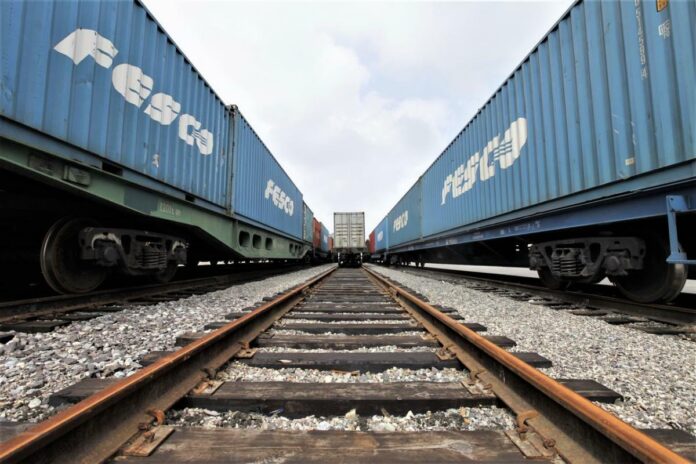TASHKENT,Uzbekistan:Uzbekistan’s foreign trade turnover for the first nine months of the year has amounted to an impressive $44.75 billion, marking a notable 22% increase compared to the same period last year, as reported by the Uzbek Statistics Agency.
During this period, exports have surged by 23.5%, totaling $17.74 billion, while the volume of imports experienced a slightly slower growth of 21%, reaching $27.01 billion. Gold exports, which have been consistently robust, maintained a level of $5.63 billion, marking an almost 90% increase from the previous year. However, this growth has contributed to a negative trade balance, which now stands at $9.27 billion, representing a 17% increase.
China has further solidified its position as Uzbekistan’s largest trading partner, accounting for $9.45 billion in bilateral trade, equivalent to 21.1% of the total. The imports from China amount to $7.59 billion. Russia continues to serve as the primary export market for Uzbekistan, amounting to $2.32 billion, with total trade turnover reaching $7.03 billion. Additionally, Uzbekistan maintains active trade relations with Kazakhstan ($3.22 billion), Turkey ($2.35 billion), and South Korea ($1.69 billion).
In terms of exports, manufactured goods, excluding gold, continue to lead the way. Notably, despite an 8.5% decrease, these goods have generated revenues exceeding $3 billion. The top contributors in this category include textiles and fabrics, accounting for over half of the revenue at $1.56 billion, followed by non-ferrous metals at $1.01 billion. Revenue from the export of steel and cast iron has risen by 43.5%, reaching $160.8 million, while leather and fur products have seen a growth of 37%, contributing $31.6 billion to the total.

Food products, totaling $1.28 billion, have generated a notable revenue increase of 19%. Among these, fruits and vegetables and grain products are the primary contributors, with revenues of $844.5 million and $368.6 million, respectively. Meat product exports have shown substantial growth, nearly quadrupling to $2.2 million.
Chemical product exports have made a significant recovery, nearly reaching last year’s levels at $974.3 million. The 20% decline in fertilizer exports, which amounted to $244.2 million, has been compensated by the increased export of inorganic substances at $400.7 million, a growth of 30.3%.
Engineering product exports have seen the most substantial growth, with revenues reaching $943.2 million, marking a remarkable increase of 43.8%. Specifically, within the hardware and electronics category, supplies have increased by 3.4 times, while “equipment for automatic data processing” has grown by 3.2 times.
Car and car component exports have also risen significantly, contributing $354.4 million to the total, with a growth rate of 42.6%. Specialized machine deliveries have increased by a third, totaling $53.9 million, and non-special industrial equipment imports have risen by a quarter, reaching $61.9 million.
For consumer goods and other commodities, exports amount to $922 million, showing a 20% increase from last year. Clothing exports reached $774.5 million, while exports of furniture and shoes saw a decline.
Several commodity items have seen a decline, with gas revenues falling by 47% ($411.7 million), and raw materials for fertilizers decreasing nearly threefold ($19.5 million). Nevertheless, oil and petroleum product shipments have doubled, amounting to $217.7 million.
In the import structure, engineering products remain the leading category at $10.3 billion, reflecting a growth of 45.4%. Motor vehicle imports have cost $3.15 billion, including $1.04 billion for components. Over $2 billion has been allocated for special industrial machine imports. Electronics supplies have grown by 69%, reaching $684 million, while spending on aircraft imports continues to rise, totaling $559 million over nine months.
Manufactured goods have been imported at a cost of $4.49 billion, marking a growth of 5.7%. This category includes supplies of cast iron and steel, which have seen a slight decrease to $1.78 billion, while imports of fabrics have grown by more than a quarter to $498.8 million.
Chemical products have accounted for $3.58 billion in imports, with a 2.6 times increase in fertilizer imports, reaching $141.6 million. Additionally, pharmaceutical product imports have exceeded $1.1 billion, although they have slightly decreased compared to the previous year.
Food imports have reached $2.54 billion, marking a 7.6% increase, with grains alone accounting for $848.2 million. Sugar and confectionery product imports have totaled $442.2 million, while imports of coffee, tea, cocoa, and spices have amounted to $260.7 million, reflecting a growth of 23.4%. Imports of fuels and lubricants have significantly increased, with oil and petroleum product imports reaching $1.18 billion, gas imports at $487.9 million, and coal purchases at $139.1 million, representing a growth of 72%.






